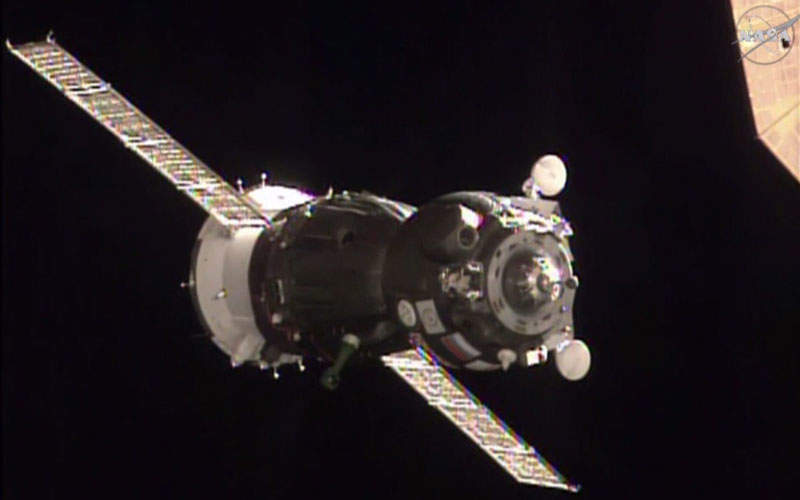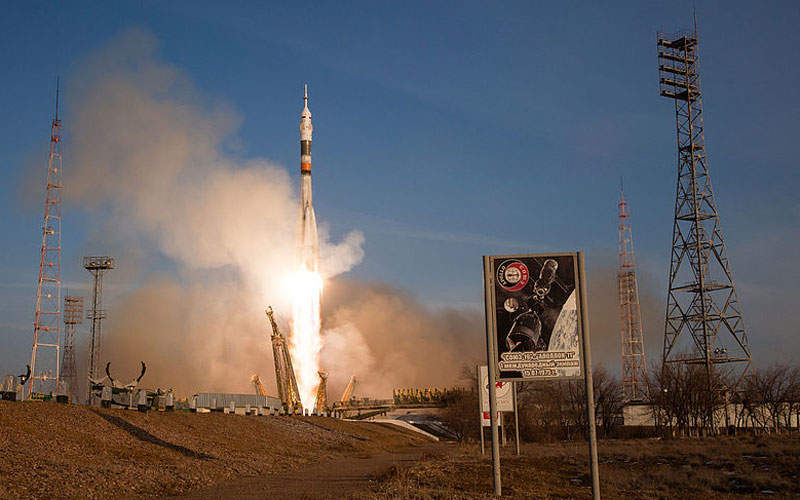The Soyuz TMA-19M spacecraft, a manned transport vehicle, lifted off onboard Soyuz-FG rocket carrying three members of the 46th expedition to the International Space Station (ISS) on 15 December 2015.
The crew members included Yuri Malenchenko of Roskosmos, Timothy Kopra of Nasa and Timothy Peake of the European Space Agency (ESA). The spacecraft and crew are expected to stay in orbit until 5 June 2016.
Design and features of Soyuz TMA-19M spacecraft
Manufactured by RKK Energia, the Soyuz TMA-19M spacecraft includes an orbital module, descent module and instrumentation and propulsion module. The spacecraft has a length of 22.9ft, diameter of 8.9ft and solar array span of 34.8ft. It has a landing speed of 6.6ft a second.
The orbital module has a launch mass of 2,866lbs and volume of 230ft³, which is used by the crew on orbit during free-flight. It includes a docking mechanism, hatch and rendezvous antennae. The orbital module is connected to the descent module through a pressurised hatch and will be separated from the latter before returning to the Earth.
The descent module has a launch mass of 6,393lbs and volume of 141.3ft³. It is used for accommodating cosmonauts and astronauts to sit for launch, re-entry and landing. It includes controls and displays of the Soyuz spacecraft, life support supplies, batteries, and the primary and backup parachutes and landing rockets.
The descent module includes a periscope for viewing the docking target on the ISS station or the Earth below. It includes eight hydrogen peroxide thrusters, which can be used to control the spacecraft orientation or altitude during the descent. It also comes with guidance, navigation and control systems that can be used for manoeuvring the vehicle during the descent phase.
The instrumentation and propulsion module has a launch mass of 5,732lbs with three compartments: intermediate, instrumentation and propulsion.
The intermediate compartment contains oxygen storage tanks, attitude control thrusters, electronics and communications and control equipment, while the instrumentation compartment includes the primary guidance, navigation, control and computer systems.
The propulsion compartment has a primary thermal control system and the Soyuz radiator with a cooling area of 86ft². It also includes a propulsion system, batteries, solar arrays and radiator and structural connection to the Soyuz launch rocket.
Development of the Soyuz TMA-19M spacecraft
The primary and backup crews conducted familiarisation training on the near flight-ready spacecraft at site 254 of the Baikonur Cosmodrome, Kazakhstan, on 1 December 2015. The spacecraft was returned to the processing facility after the completion of the irreversible operation and was attached to the launch vehicle adapter for integration with the payload fairing.
The final inspection of the spacecraft was completed on 8 December 2015. The spacecraft, with fully assembled payload section, was transported from site 254 to the launch vehicle processing building located at Site 112 on 11 December 2015. It was integrated with Soyuz-FG rocket and rolled out to the launch pad at site 1 in Baikonur on 13 December 2015.
Launch vehicle
A Soyuz-FG rocket was used for lifting off the Soyuz TMA-19M spacecraft along with three crew members. The spacecraft was lifted off from launch pad 1 of the Baikonur Cosmodrome.
The launch vehicle was driven by four engines in the first stage and one engine in the second stage. The third stage of the rocket consists of a four-chamber engine with two boosters.
Russian ground control station
The Russian Mission Control Centre located outside Moscow monitors the approach and docking of the Soyuz TMA-19M spacecraft. The crew members inside the spacecraft will also have the capability to manually intervene or execute the spacecraft docking operations.





